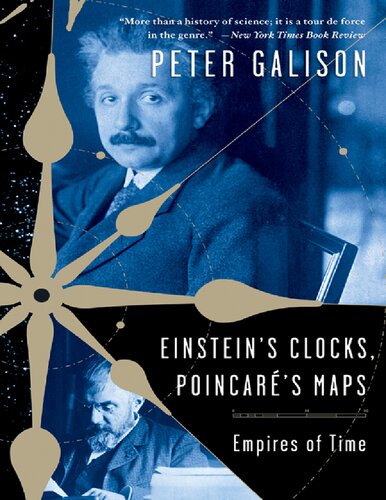
Einstein's Clocks and Poincare's Maps
Empires of Time
کتاب های مرتبط
- اطلاعات
- نقد و بررسی
- دیدگاه کاربران
نقد و بررسی

April 21, 2003
Harvard historian of science Galison approaches our understanding of time at the beginning of the 20th century through two related dimensions. The first, extremely practical perspective focuses on our ability to accept a common definition of time at various locations. Before our current system of time zones existed, time was a local construct, making it extremely difficult to coordinate events, have trains run smoothly or determine longitude. The second, far more theoretical perspective deals with the basic laws of physics and addresses the question: is time absolute or relative? Galison focuses his narrative through the eyes of the two scientists most responsible for crafting our present understanding of time, Albert Einstein and Henri Poincaré. While Einstein needs no introduction, the less well-known Poincaré does. He was one of the world's most renowned mathematicians and president of the French Bureau of Longitude. Galison explains how, in the case of each of these scientists, the practical dimension helped shape their understanding of the theoretical dimension, and, in turn, how they helped transform the world. Although Galison's material is of great interest, his writing is often obtuse and overly technical, making the book's ideas less accessible to a general audience. 46 illus.

August 1, 2003
At the beginning of this book, Galison, a Harvard-based historian of science, notes that relativity theory starts with a concern for the definition of time-what do we mean by time and by the notion of simultaneity? Einstein and his contemporary, Henri Poincare, a brilliant polymath, both answered that time is properly defined by rigorous descriptions of measurement methodology and procedures for comparing the time at different, separated locations. They also set aside the metaphysical Newtonian concept of "absolute time" flowing serenely onward independent of merely human measurement systems. Galison argues that Einstein and Poincar had more to work with than just ivory-tower theorizing. He documents how both men were deeply involved with the technical and practical issues of time measurement that were being addressed in the "real world" of the late 19th and early 20th centuries. Einstein used telegraph networks and train station clocks to experiment with time; Poincar mapped global time coordinates. Galison writes with a cheery enthusiasm that enlivens a rather arcane subject. Strongly recommended for academic and large public libraries.-Jack W. Weigel, Ann Arbor, MI
Copyright 2003 Library Journal, LLC Used with permission.

























دیدگاه کاربران